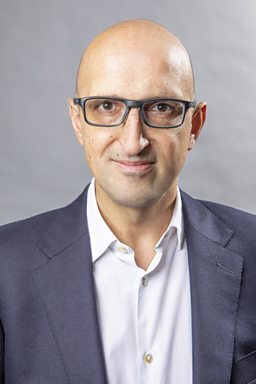Why are humans so bad at dealing with unlikely events?
Best-selling author Matthew Syed is the presenter of a new Radio 4 series, Sideways, which explores different ways of seeing the world around us.
Here he explains why humans are so bad at dealing with unlikely events, and the assumptions we make that can often trip us up.

You may have noticed that we humans are not always adept at dealing with unlikely events. This pandemic, for instance, was widely predicted but not well prepared for. It’s easy to blame politicians, but would you have voted for a political party 18 months ago promising to divert funds to prepare for a potential virus that had yet to materialise? It is a tricky thought experiment to perform given the times we are living through, but you can probably see my point.
Probability is one of the topics we will be exploring in Sideways, my new Radio 4 series.
-
![]()
Listen to Sideways
Matthew Syed explores the ideas that shape our lives with stories of seeing the world differently.
One of the stories we look at is that of Sally Clark, who was convicted of murdering her two children. At first, the deaths were put down to sudden infant mortality syndrome, or cot death. But then, police became suspicious, and arrested Clark despite protestations of innocence.
The case turned on the testimony of Sir Roy Meadow, who explained to the jury that the probability of one new-born dying from cot death was one in eight thousand. So two dying in the same family equated to one in 73 million – one in 8000 multiplied by one in 8000. This became known as Meadow’s Law: “One cot death is tragic, two is suspicious and three is murder, unless proved otherwise.”
But Meadow made two subtle errors of probability:
1. He assumed that if one child in a family dies of sudden infant death syndrome, it's no more and no less likely that a subsequent child will die in that way. But there are many reasons why these two events won't be independent: there might be other features which are in common to such a family which would make a second death more likely after a first. For example, there could be a genetic factor, or environmental factors unique to the family.
2. Meadow also committed the so-called prosecutor’s fallacy. The jury were invited to infer that murder had taken place because of the unlikelihood that two children would die in the same family of cot death. But they were not given any relevant comparison – for it is also unlikely that two children would be killed by their own mother. Roy Meadow assigned the first explanation a likelihood – one in 73 million – but neglected to do the same for the second. After all, how often does a mother murder both children? The jury were not told.
Clarke was eventually freed on a second appeal, partly because the errors in probability had been identified. But she was a broken woman and died from alcohol poisoning four years later. A number of other women were also convicted on the testimony of Meadow, including Angela Cannings and Donna Anthony. Trupti Patel was also acquitted of the charge of murder.
In the aftermath of these cases, Meadow became the villain. He was blamed for these miscarriages of justice and initially struck off from the medical register. But this was another statistically dubious conclusion. For it failed to take into account that the errors were not Meadow’s alone.
The statistical errors were also implicitly accepted by the prosecution, by the judge in the original trial, by three justices at the first appeal, and likely the original jury, too. It was even accepted by Sally Clark’s defence, which is why Meadow’s testimony was not challenged in open court. Indeed, in 2006 Sir Roy Meadow had his medical licence reinstated by the High Court with the judge ruling that "expert witnesses should be immune from disciplinary action."
In effect, almost everyone was bamboozled by that number – one in 73 million – which told us very little about Sally Clark’s innocence or guilt, but very much about our collective blind spot for probability. Collapsing the blame for these errors to Meadow alone, without taking into account how they were compounded by the system, represents perhaps the most dangerous probabilistic error of all. The tendency to scapegoat. Life is rarely that simple.

But the new series isn’t just about exploring probability and blame. We also look at how attitudes to sex in the Middle Ages led to the industrial revolution (yes, really), how the ideas of a maverick general in the US Army were critical for the success of the Brexit campaign, and how a bank robbery in Stockholm changed the way we think about psychology and power.
In each case, we seek diverse perspectives from leading thinkers. The result is a new view of the world – but sideways.
More to discover...
-
![]()
Sideways
Take another look at the stories that surround us.
-
![]()
More or Less
Tim Harford explains – and sometimes debunks – the numbers used in everyday life.
-
![]()
Made of Stronger Stuff
Psychologist Kimberley Wilson and Dr Xand van Tulleken ask - one body part at a time - how much control do we have?
-
![]()
Seriously...
Home to the world’s best audio documentaries and podcast recommendations, hosted by Vanessa Kisuule.





